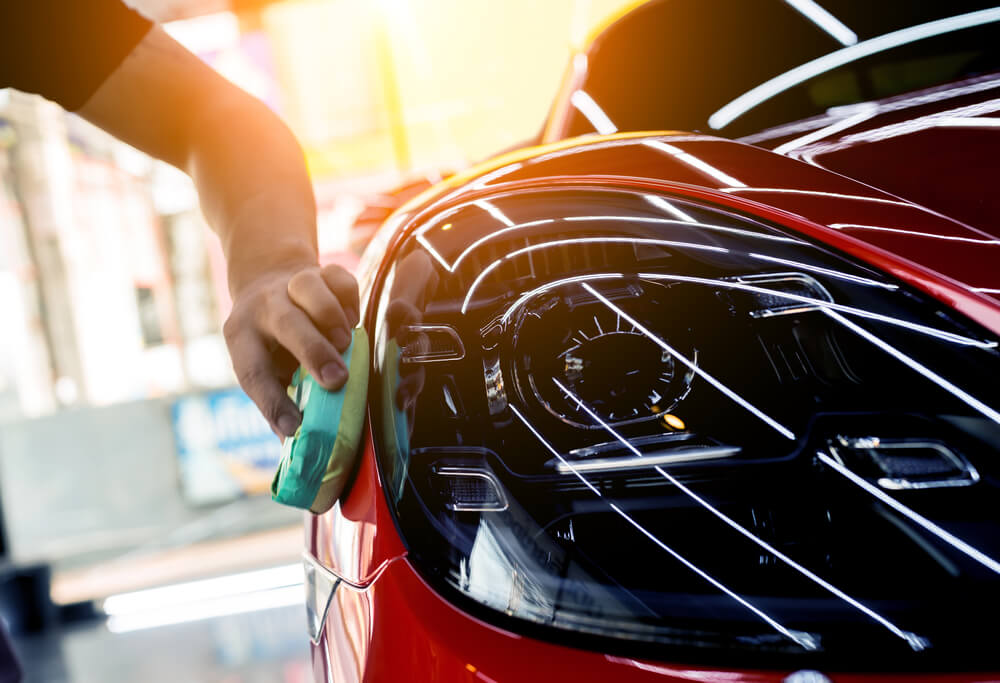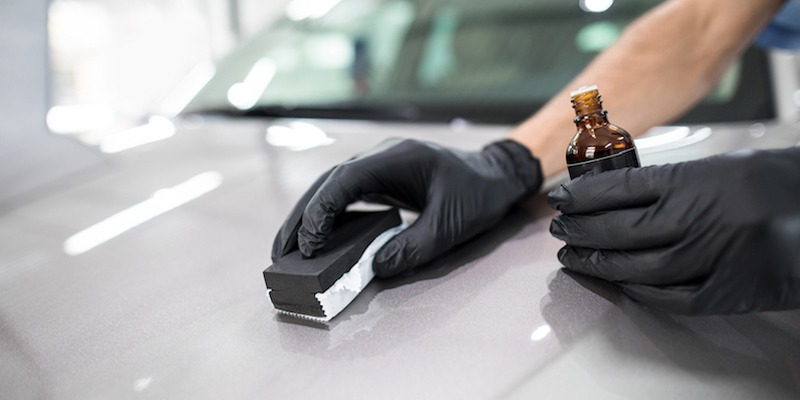Exactly How Ceramic Coating Can Safeguard Your Vehicle from Environmental Damages
Exactly How Ceramic Coating Can Safeguard Your Vehicle from Environmental Damages
Blog Article
The Relevance of Ceramic Coating: Shielding Your Automobile's Exterior With Precision
In an age where keeping the aesthetic and practical honesty of your automobile is extremely important, ceramic finishing arises as a pivotal service. With its distinct bonding buildings, ceramic covering uses a degree of defense that much surpasses conventional waxing techniques.
Advantages of Ceramic Coating
When it comes to protecting a vehicle's aesthetic allure, ceramic layer supplies significant benefits. By developing a semi-permanent bond with the car's paint, ceramic finishings efficiently prevent oxidation and fading, making certain that the auto keeps a shiny, showroom-like finish for an extensive duration.
Along with its safety high qualities, ceramic covering offers impressive hydrophobic properties, triggering water and other liquids to grain off effortlessly. This attribute simplifies the cleansing procedure, as dirt and particles are less most likely to abide by the surface area, reducing the regularity and effort needed for maintenance. In addition, the finish's resistance to chemical stains from acidic pollutants like bird droppings and tree sap is one more noteworthy advantage, minimizing possible paint damage.
Ceramic coatings likewise boost scratch resistance, supplying a layer that can soak up small abrasions and swirl marks. This quality is specifically useful in keeping a pristine surface, lowering the probability of visible flaws and maintaining the honesty of the vehicle's paintwork gradually.

Exactly How Ceramic Layer Works
Comprehending the auto mechanics behind ceramic layer reveals its efficacy as a protective service for automobiles. Ceramic coatings are essentially fluid polymer applications that chemically bond with a vehicle's factory paint, creating a protective layer. This layer serves as an obstacle against environmental contaminants such as gunk, dirt, and ultraviolet rays, which can degrade a vehicle's exterior in time. The essential element in ceramic finishing is silicon dioxide (SiO2), which originates from quartz crystals and is understood for its outstanding firmness and toughness.
Application of ceramic covering includes a meticulous procedure. At first, the car's surface area need to be completely cleaned and sanitized to make sure ideal adhesion. When applied, the fluid polymer forms a semi-permanent bond with the paint, setting into a clear, resilient shield. This shield enhances the automobile's gloss and hydrophobic buildings, assisting in easier cleansing by causing water and impurities to bead and slide off easily.
Moreover, the finish's molecular structure supplies resistance to small scratches and chemical spots. Unlike waxes or sealers that rest on top of the paint, ceramic finishes incorporate with the surface, providing durable protection. This integration is essential to its efficiency, ensuring the lorry's finish continues to be immaculate for many years.
Comparing Ceramic Coating to Alternatives
In the world of vehicle defense, ceramic covering stands as a powerful choice when compared to conventional alternatives such as sealants and waxes. While waxes provide a short-term shiny finish, generally lasting just a couple of weeks to months, ceramic finishings offer a longer-lasting service, often enduring for several years. This longevity is credited to the chemical bonding that happens when ceramic finishings are applied, forming a solid layer that is resistant to ecological dangers.
Contrastingly, sealants, although more resistant than waxes, still disappoint the robust defense supplied by ceramic finishes. Sealants can generally last for approximately a year, giving a synthetic shield versus specific elements. Nonetheless, they do not have the exceptional hydrophobic residential properties and UV security that ceramic coverings provide.
Furthermore, ceramic finishes offer enhanced scratch resistance, which neither waxes neither sealers can properly match. In summary, while standard waxes and sealers supply basic protection, ceramic finishings offer a comprehensive, long-lasting solution that considerably improves and maintains the lorry's exterior finish.
Application Process Discussed
Applying ceramic finishing to a car requires a precise process to guarantee optimal results and resilience. The initial step involves thoroughly cleaning the vehicle's surface to remove dust, oil, and previous waxes. This is critical for ensuring the coating adheres effectively. A pH-neutral hair shampoo and a clay bar therapy are frequently utilized to achieve a pristine surface area. When cleaned up, the vehicle is dried out and brightened to get rid of any imperfections, as any kind of existing scrapes or swirls can end up being extra noticable after the covering is applied.
Following surface prep work, the application of the ceramic finish begins. The finishing is generally applied in a climate-controlled setting to protect against dirt bits from picking the freshly cleansed surface. Using an applicator pad, the ceramic coating is applied in tiny sections to make certain also coverage. It is vital to comply with the producer's guidelines pertaining to see the suitable treating time and application density.
After application, the layer needs a particular curing duration, during which the car should be secured from water and impurities. This healing process can vary relying on the item but typically ranges from 24 to 2 days. Eventually, this thorough process is crucial in attaining a resilient and glossy surface.
Maintenance Tips for Durability
To maintain the durability of a ceramic finish, adherence to a disciplined maintenance routine is important. Avoid automatic auto cleans, as their harsh brushes can compromise the covering's stability.
Post-wash, drying out the lorry with a tidy microfiber towel protects against water places that may degrade the coating gradually. Furthermore, apply a ceramic layer booster every couple of months. These boosters enhance the hydrophobic residential or commercial properties and boost the covering's protective capacities, ensuring it remains efficient versus impurities.
Maintain in mind that vehicle parking places play an important duty in upkeep. ceramic coating. Whenever feasible, park in shaded areas to decrease UV direct exposure, which can progressively compromise the finishing. For lasting storage space, take into consideration using an auto cover for added protection versus environmental elements
Verdict
Finally, ceramic finish serves as an important safety layer for lorry outsides, offering long-lasting defense against ecological factors such as crud, uv, and dirt rays. By creating a semi-permanent bond with the paint, it enhances aesthetic charm while maintaining the cars and truck's value. Its hydrophobic properties assist in less complicated maintenance, distinguishing it from alternate safety approaches. Recognizing the application process and adhering to maintenance suggestions are crucial for optimizing the durability and efficiency of ceramic layer.
When navigate to this website it comes to maintaining a vehicle's aesthetic appeal, ceramic finish offers significant advantages. By creating a semi-permanent bond with the vehicle's paint, ceramic you can look here layers effectively prevent oxidation and fading, making sure that the vehicle keeps a glossy, showroom-like surface for an extended period. Ceramic coverings are basically fluid polymer applications that chemically bond with a car's manufacturing facility paint, creating a safety layer. In recap, while typical waxes and sealers provide fundamental defense, ceramic finishings offer a comprehensive, lasting remedy that significantly protects the vehicle and improves's exterior surface.

Report this page